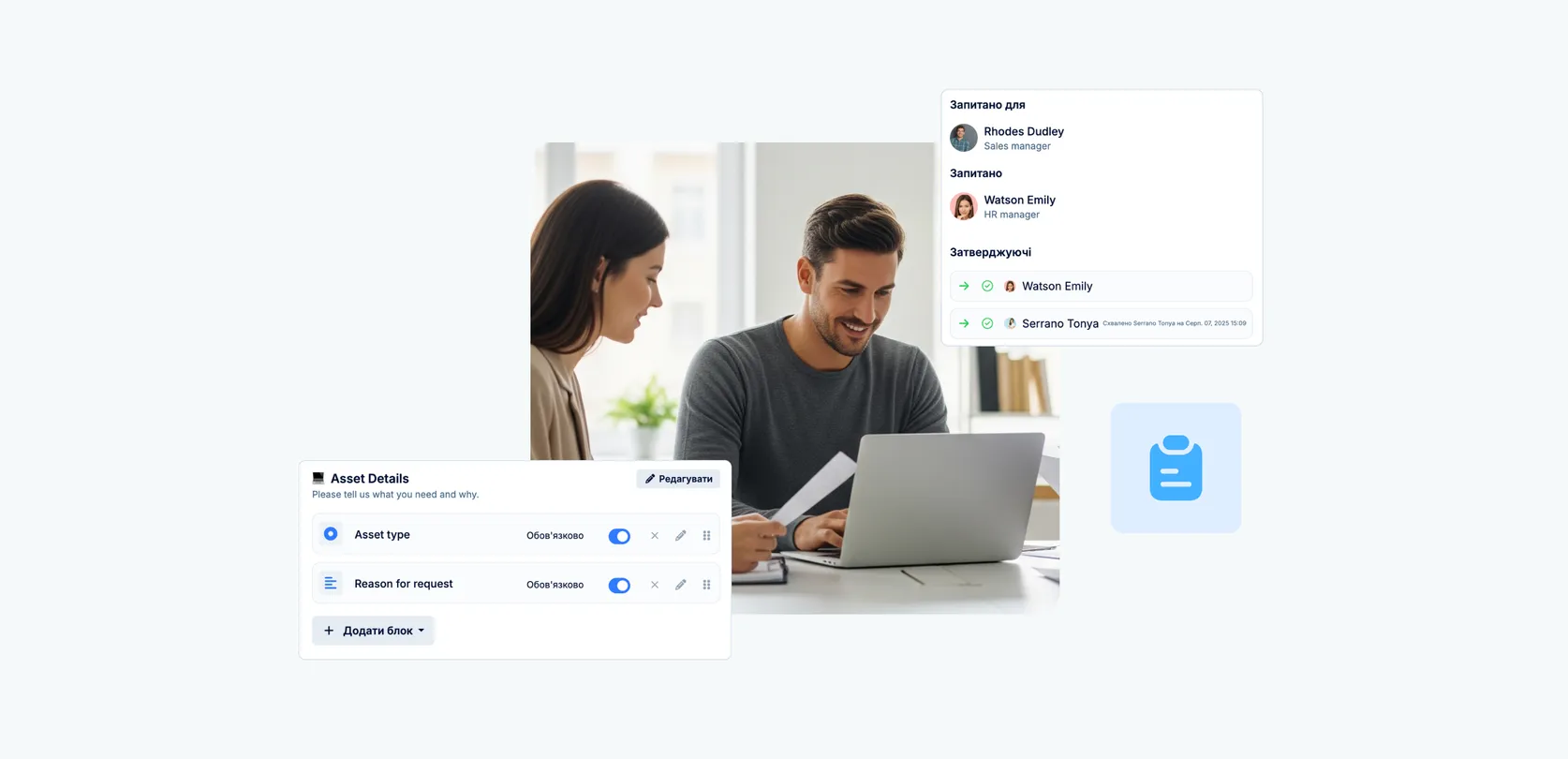
Turn daily HR requests into a smart process with our Request Forms
“Can you please update Jane’s salary?”
“I’ve moved to another country - do I need to send you something?”
“We just promoted Alex - can you please change their title in the system?”
Recognizable, right? Salary adjustments, compensation changes, document submissions etc., – all of that is an everyday routine for most HR teams. Each of these requests requires approvals, tasks for other departments, and profile updates — and often, there’s no defined process to manage it all. One or multiple HRs get involved without clarity on ownership, status, or what’s already been done.
Sometimes HR gives employees direct access to edit their own records – but without approvals or validation, it leads to errors and outdated info.
That’s where things get messy – and eventually, unscalable.
Stop juggling updates and requests across tools and channels. Now you can manage them all in one place - with Request Forms that are built into PeopleForce. Customize them to your processes, and the rest of your workflows easily now.
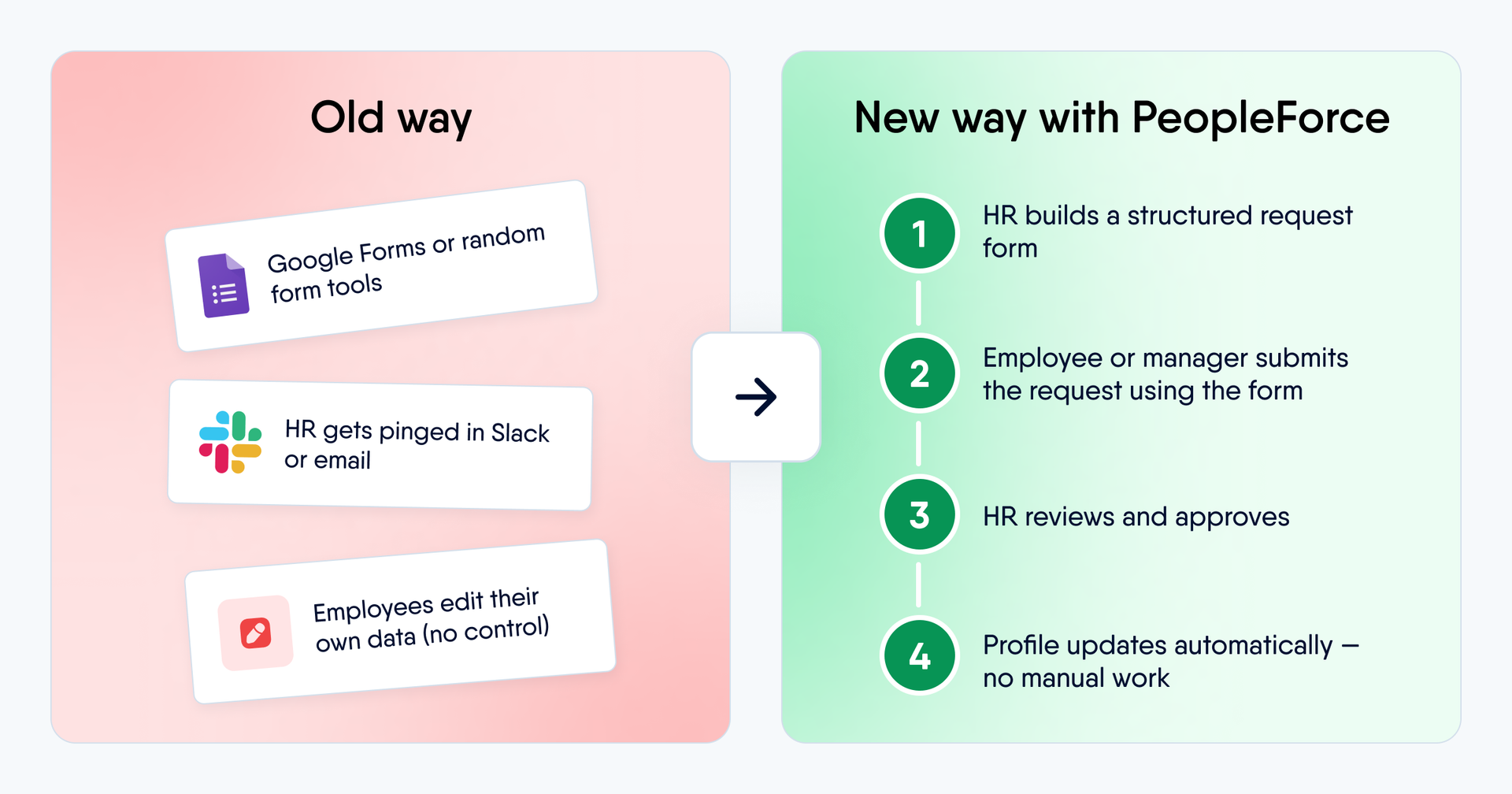
This spotlight will break down the daily use cases you deal with, and how PeopleForce takes care of them with built-in automation and no manual mess.
Request forms – your better way to handle employee requests and profile changes
Request forms in PeopleForce are designed to handle repetitive requests automatically – while keeping you in control with transparent tracking and approval flows. The forms help you manage:
- Employee-submitted requests for updating personal information like name changes, document updates, or address changes
- Manager- or HR-initiated record changes such as role updates, bonuses, or performance-based salary adjustments
- Everyday service-based requests by people like business trips, asset requests, or reimbursements - where the request doesn’t directly change employee data, but still requires structure and follow-up
No external tools. No chaos. Just clear forms that route to the right people, trigger the right actions, and update the right data.
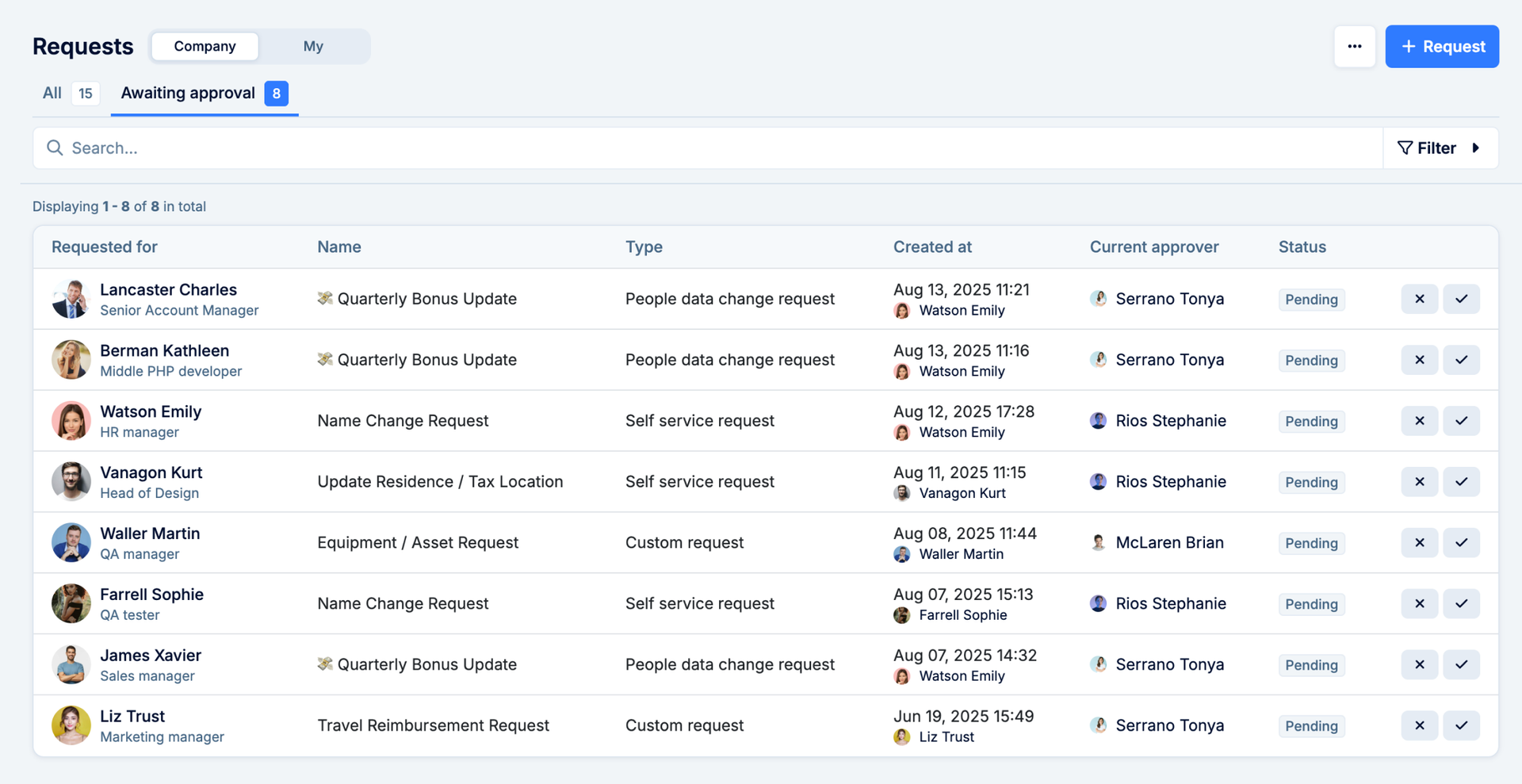
What types of request forms are available in PeopleForce?
PeopleForce gives you three flexible form types to do this and match the way your team works:
🟦 Self-Service Request Forms
Let employees initiate updates for themselves - with full control over what fields are available and who needs to approve.
Perfect for things like name changes after marriage or residence updates.
🟩 People Data Change Request Forms
Used by managers and HR to change employee records - like position, level, salary, or bonuses.
Ideal for internal mobility, promotion tracking, compensation adjustments, and performance review outcomes.
🟨 Custom Request Forms
Designed for business-related requests and operational needs.
Use these for travel forms, reimbursement requests, asset needs, or anything else you want to standardize.

These forms don’t just collect requests - they give HR a structured way to manage changes, keep people's data up-to-date, automate repetitive tasks and move faster with fewer errors.
What you will have with Request forms:
Flexible form builder: Create fully customizable forms using various field types - dropdowns, file uploads, date pickers, or any custom field tied to employee data.
Smart approval flows: Set up multi-step approvals involving HR, finance, legal, or managers - with role-based access and control over who can submit or review what.
Clear tracking & communication: Every request includes a status, history log, comments and automatic notifications. Approvers can also request changes if something needs correction.
End-to-end automation: Trigger workflows once a request is submitted or approved - like creating tasks for other departments, generating documents for updates for signature, or sending additional follow-up forms.
💡 Want to see how workflows connect everything behind the scenes? Explore PeopleForce Workflows →
Learn how to automate task creation, document flows, form sequences, and more - all tailored to your HR processes.
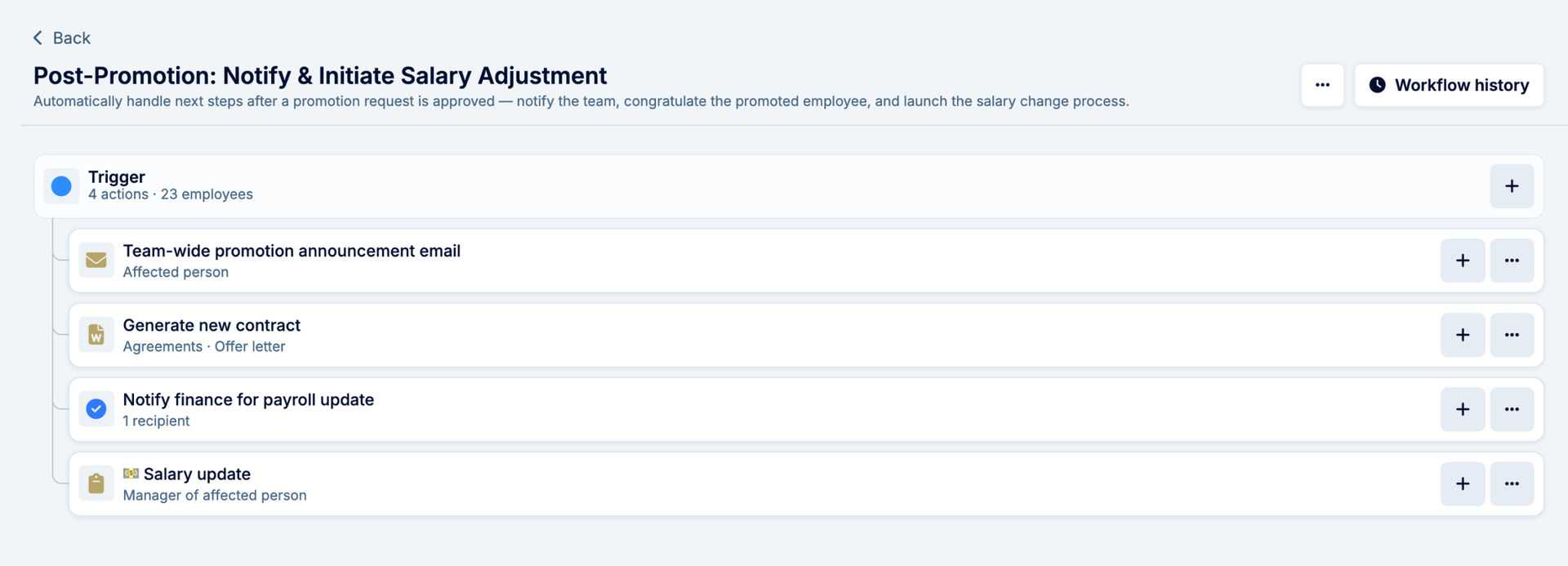
Connection to employee data: For applicable requests ( changes to name, salary, compensation, or position) approved forms automatically update the employee’s profile. These updates can also sync with other systems via webhooks.
Quick access for employees: Forms are easy to find and use - right from the interface via the Quick Add button.

Everyday scenarios, solved with a simple Request form
One of the easiest ways to get started with request forms is to look at what your HR team already handles day to day.
At Room 8, we use Forms to handle Self-Service and People Data Change requests – like updates to addresses, contacts, documents, compensation, bonuses, positions, and more. We’ve also set up a key process for us: changing the cooperation type. The approval process is now much easier – the specialist updates the data directly, HR gets a notification, and if needed, the request can be sent back for revision. A big advantage is that workflows can start right from the form, which saves a lot of manual work. Forms are a great feature that makes the approval process clear and keeps the team involved.
Here are some real examples of how PeopleForce request forms help our customers manage requests with automation and structure.
# | Request example | Initiated by | Form type | Smart process behind it | Recommended next step automation |
1 | Change the last name after marriage | Employee | Self-Service Request Form | Employee submits a request to change the name and uploads new ID/passport; HR approves; Profile with new data updates automatically | Regenerate documents (e.g. contract, NDA) with updated name via triggered workflows after the request is approved |
2 | Update residence or tax location | Employee | Self-Service Request Form | Employee adds a request to update their location and uploads new tax documents and details; HR and Finance approve; Appropriate fields in the profile updates automatically | Once the request is approved - automatically trigger tasks to legal and payroll to update contract documents and sync tax info |
3 | Submit an employee promotion request after performance review | Manager | People Data Change Request Form | Manager requests role change from Middle to Senior for their subordinate; HR and C-level approves; The positions in the profile is updated automatically. | Trigger a congratulations email to person and the team and automatically send the salary change form for submission |
4 | Request a salary adjustment | Manager | People Data Change Request Form | Manager proposes salary increase for the employee due to performance review results linked to reasoning or prior approvals; HR, finance and C-level approves; Salary field in the profile is updated automatically | Trigger notification and tasks to finance department to update the salary in the payroll system |
5 | Log a quarterly or annual bonus | Manager | People Data Change Request Form | Manager submits a request to log and pay the bonus for the subordinate; HR and finance approve; The bonus amount is logged automatically in the employee profile. | Trigger the task to finance department to pay the bonus amount |
6 | Request approval for a business trip | Employee, Manager or HR | Custom Request Form | A person submits a request with trip details and reason; Request is routed to the direct manager and HR for approval. | Trigger tasks and assign the travel checklist and email notification to the travel manager. |
7 | Submit a reimbursement for out-of-pocket expenses | Employee | Custom Request Form | Employee submits a request and attaches all necessary receipts; The request is reviewed and approved by finance. | Trigger the task of the finance team to process reimbursement. |
Whether you start with a simple name change form or a manager-submitted promotion request, you can begin building a cleaner, faster, and more controlled process with Request forms.
Choose the best form for every employee or HR request
Not sure which form to use in PeopleForce? This quick decision guide takes you from “What type of request is this?” to the exact form that keeps your approvals clear and your data up to date.
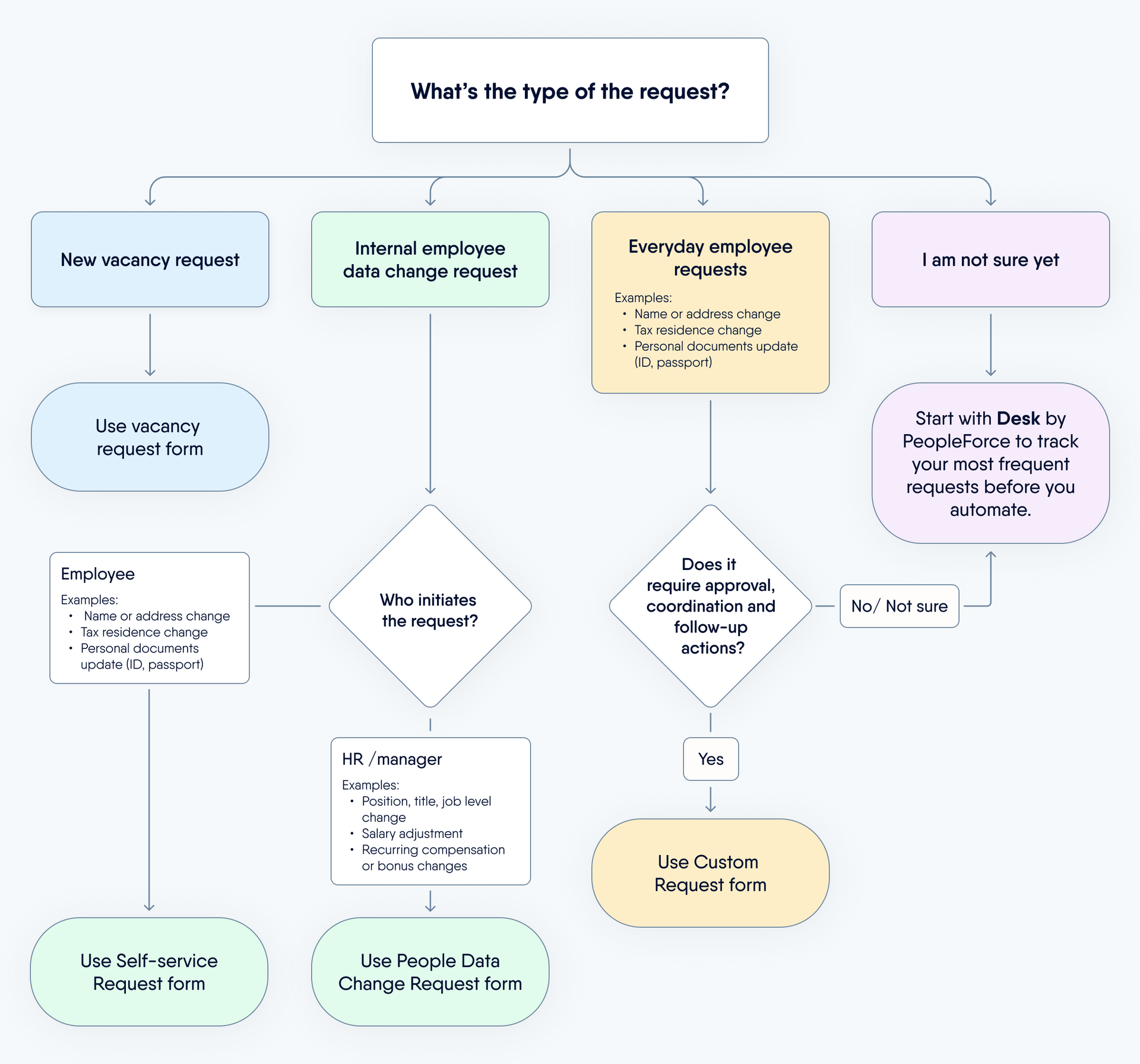
Tip from PeopleForce: start with understanding your process first
Our Request forms are powerful - but the real magic lies in how you structure your initial process.
You can build the perfect request form, but if there’s no process or approval flow around it, no one will use it.
That’s why structure, culture, and communication matter most.
- Start by helping employees understand why keeping their records up to date is important - for payroll, benefits, compliance, and internal mobility.
- Set a visible, repeatable process for how different requests should be submitted, who will approve them, and what happens next. You can document this in a knowledge Base article right inside PeopleForce, so employees always know where to look and how to follow the process.
- Build forms only where there’s a clear pattern, not for one-off edge cases that could be handled another way.
- And most importantly: keep it simple at first. A few well-designed, high-frequency forms are more impactful than a dozen that never get used.
You can start right now by heading to Settings → Forms in PeopleForce and building your first form. And if you need help along the way, here’s a step-by-step guide in our Help Center →.
Not sure which requests are worth turning into forms yet?
If you’re thinking about what kinds of requests flow through your company - or how often they repeat - we recommend starting with a light case/help desk setup using PeopleForce Desk.
New to PeopleForce? See it in action: 👉 Book a demo to learn how request forms, workflows, and employee data updates can work together in one place.
Recent updates
Get ready for the EU Pay Transparency Directive with PeopleForce
Discover the key obligations of the Pay Transparency Directive and see how PeopleForce helps organisations prepare the structures, processes, and data needed to comply with the new requirements.
Fresh features to boost your performance reviews and goal-setting by the end of 2025
As the goal-setting and performance review season approaches, it’s the perfect time to ensure your processes are smooth, insightful, and motivating for every employee.
Fresh Features to fuel your hiring in mid-2025
From empowering integrations to AI features and more customization: the first half of 2025 brought a wave of improvements to our Recruit product, making hiring more connected, intelligent, and scalable.

